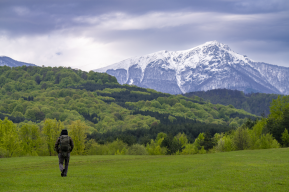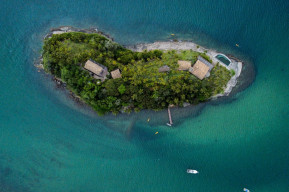News
UNESCO Director General calls for improved protection of Great Apes and their habitats

Ms Audrey Azoulay, Director-General of UNESCO, called for direct action to improve the protection of Great Apes and their habitats during an information meeting for Member States and experts on 21 March. The meeting, co-hosted by UNESCO and the Muséum national d’Histoire naturelle (Natural History Museum, MNHN), was an opportunity to raise Member States’ awareness of the urgency and of our shared responsibility to protect Great Apes – an umbrella species for the tropical forest ecosystems - and discuss the way forward, including the possibility of establishing a fund to support UNESCO’s actions for the conservation of Great Apes and their habitats, which encompass biosphere reserves and natural World Heritage sites.
Great Apes – gorillas, chimpanzees and orangutans – are the closest living relatives to humans. Today they are facing grave threats, including the loss and degradation of their habitats, hunting and illegal trade, and human-conveyed diseases. Protecting Great Apes means protecting tropical forests that are essential to address climate change and provide crucial ecological services.
Ms Azoulay stressed that Great Apes conservation constitutes an ethical challenge for all of humankind, as they remind us of what it is that makes us human: “our capacity to recognize a responsibility for all that lives and that is different than us”. She recommended taking an integrated and international approach, taking full advantage of UNESCO’s expertise, particularly through the Man and Biosphere (MAB) programme, the Local and Indigenous Knowledge (LINKS) section and the World Heritage Convention, and collaboration with key partners, such as the MNHN.
Mr. Bruno David, President of the MNHN, explained the Museum’s partnership with UNESCO as a shared commitment to prevent the loss of Great Apes and their habitats. He clarified the Museum continues to work on the matter by creating awareness, conducting research and improving living conditions in captive and natural environments.
National and transboundary protected areas are becoming a last stronghold for many ape taxa. Although covering only a fraction of Great Apes’ natural habitat, Biosphere Reserves and World Heritage sites already protect six of the seven Great Apes (39 UNESCO designated sites in 23 countries are home to Great Apes). Ms Noeline Raondry Rakotoarisoa highlighted the need to expand such dedicated areas. She also presented UNESCO’s involvement in the Great Apes Survival Partnership (UN-GRASP), a unique alliance of national governments, conservation organizations, research institutions and private companies.
The shared responsibility to protect our close relatives is not only ethical but also direct, as the policies and actions of all nations can have an impact on their survival. Ms Sabrina Krief, Professor at the MNHN, shared her experience from her research on chimpanzees in Uganda and involvement in conservation actions. A big achievement was a call to sensitize the French government to reduce activities inflicting stress on Great Apes, which collected over 15,000 signatures, and led to the adoption of the protection of Great Apes and their habitats in the French biodiversity plan of 2018.
The open discussion that followed focused on the way forward, and means to strengthen UNESCO’s actions in line with its mandate. The Ugandan delegation suggested to propose a draft resolution for the next executive board meeting, which Argentina and France supported.
Presentations






